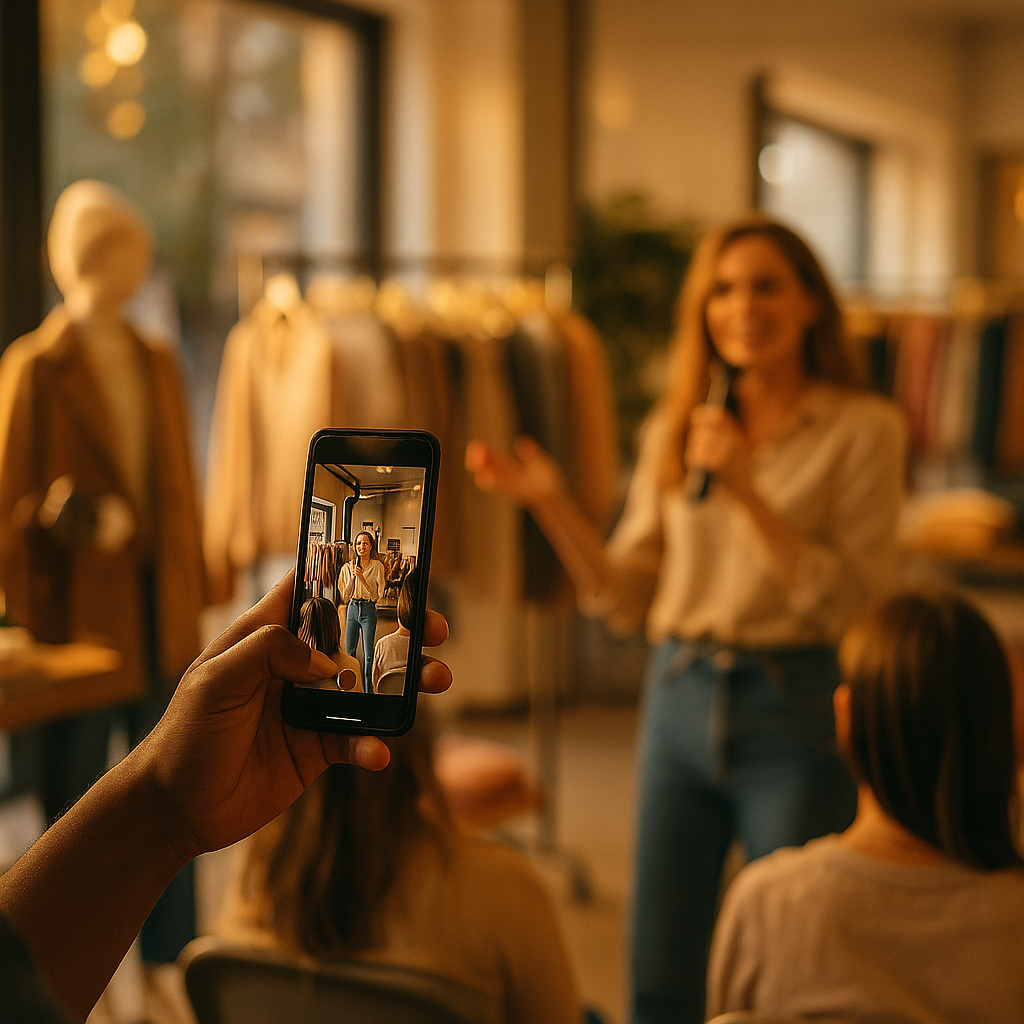Discover how a successful in-store event can boost your digital footprint and drive measurable results. This case study explores the strategy, execution, and outcomes of a recent event designed to ignite online engagement. Follow along as we break down what made this activation stand out — and how you can replicate its success.
Strategic Planning: Building an Event for Customer Engagement
Effective in-store events require detailed planning and foresight. In this case, the marketing team identified the primary goal: to create a seamless in-person experience that would continue to spark conversations and interactions online. The event strategy focused on:
- Inviting both loyal customers and curious newcomers through targeted email and social campaigns
- Integrating live demos and interactive stations to foster participation
- Utilizing real-time feedback mechanisms to gather insights during the event
- Collaborating with local influencers to generate pre-event buzz
By leveraging these elements, the brand established a clear blueprint for nurturing authentic connections, both on-site and in digital spaces.
Experiential Elements: Creating Memorable In-Store Activations
To spark genuine engagement, the event team prioritized interactive experiences over passive displays. Upon arrival, each guest received a personalized badge that doubled as a QR code for exclusive online access. Key features included:
- Hands-on product trials with instant feedback tablets
- A “Share Your Story” video booth for customers to record testimonials, automatically uploaded to the brand’s social channels
- Live-streamed workshops, allowing virtual participation and questions from online viewers
- An Instagrammable backdrop designed for user-generated content, paired with a branded hashtag competition
This multifaceted approach ensured attendees became brand advocates, sharing their experiences organically across online platforms.
Cross-Promotion Tactics: Linking In-Store to Online Channels
To bridge the gap between on-site experience and digital follow-through, integrated marketing was key. The team implemented:
- Exclusive digital content unlocked only through event participation
- Incentives for attendees to post using the event hashtag — including online discount codes and prize draws
- Real-time event stories and behind-the-scenes videos across all major platforms: Instagram, TikTok, YouTube, and Facebook
- QR codes placed throughout the store directing guests to new online releases and special promotions
Post-event follow-up emails encouraged attendees to engage further by reviewing new products, joining online workshops, and inviting friends to the brand’s online communities.
Results: Measuring Event Success and Online Engagement
Data-driven evaluation provided clear evidence of boosted customer engagement and digital growth. Over the two weeks following the event:
- Social media mentions increased by 340% compared to the previous month
- Website traffic doubled, with more than 60% of visitors arriving through QR code referrals
- Online sales rose by 28%, primarily from first-time buyers who attended the event
- The event hashtag accumulated over 24,000 posts and stories, reaching an estimated 1.2 million users
- Email newsletter sign-ups grew by 1,900, with event-exclusive offers achieving a 38% redemption rate
Feedback surveys revealed that both in-person and online participants rated the activation highly for creativity and value, underscoring the importance of integrated event design.
Key Takeaways: Best Practices for Connecting In-Store and Online
Reflecting on this case, several best practices emerged for brands seeking to replicate its success in 2025:
- Create continuity: Link each in-person element to a digital call-to-action.
- Embrace user-generated content: Make sharing effortless and rewarding for guests.
- Involve influencers and loyal customers: Amplify reach before, during, and after the event.
- Capture feedback in real time: Use surveys and interactive touchpoints to refine future activations.
- Measure holistically: Track both online and offline KPIs to gauge event ROI.
By prioritizing experience, integration, and measurable outcomes, brands can amplify their presence and build lasting digital communities from offline moments.
Expert Insights: What Retailers Can Learn for 2025
Industry experts emphasize the ongoing value of omnichannel engagement. According to a recent survey by NRF, 72% of consumers are more likely to purchase from brands that offer seamless transitions between physical and digital experiences. This case study underscores the need for:
- Investing in technology that connects in-store touchpoints to online platforms
- Training staff to communicate the value of digital communities to in-person visitors
- Continuously analyzing outcomes to adapt and personalize future events
As shopper expectations evolve in 2025, events that foster genuine connection — and extend that energy online — will drive both loyalty and long-term growth.
FAQs: In-Store Event and Online Engagement Case Study
-
What is an in-store event that drives online engagement?
An in-store event designed to drive online engagement combines live, interactive experiences with digital strategies such as social sharing, QR codes, and exclusive online offers to amplify reach, build community, and boost e-commerce results.
-
How do you measure the impact of such an event?
Brands track metrics such as increases in social media mentions, website traffic, event hashtag usage, online sales, and new digital sign-ups — alongside attendee feedback and overall participation.
-
What are some proven tactics to connect in-store events to online channels?
Popular tactics include using QR codes, interactive digital displays, live-streaming, social media competitions, and post-event follow-up emails with personalized offers to drive ongoing engagement.
-
Why is customer feedback during events important?
Real-time feedback allows organizers to adapt quickly, enhance experience quality, and gather insights to improve future events and online offerings — increasing satisfaction and loyalty.
The right in-store event can transform one-time visitors into long-term online advocates. By combining experiential design with strategic digital integration, brands can drive remarkable engagement and growth. Prioritizing these tactics in 2025 will set your events apart and foster enduring customer loyalty.
